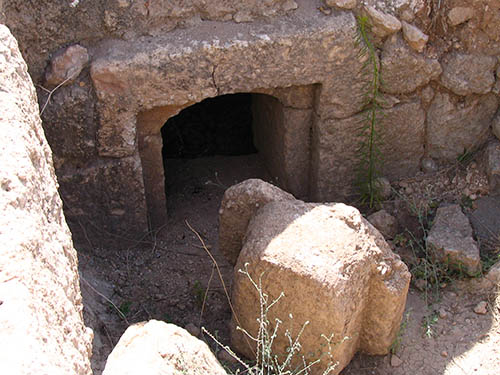Yup… Xmas is just a few days away.
Fourteen, to be exact, as this is being written.
And Americans have done what Americans do best — commercialize and capitalize upon the sacred.
I mean, what would Xmas be like without Satan Claws, the Ishtar Bunny, Abdominable Snowman, or Rudolph the Brown-Nosed Reindeer, eh?
Maybe that’s too much mixture of metaphones.
But, “merii Kurisumasu,” to you, anyway.
“Kurisumasu” is Japanese, being, of course, the phonetic pronunciation of Christmas, and “merii” being the phonetic pronunciation of the term recognizing the Virgin of Paloma; combine the two, and you have yourselves a merry little Christmas, dear. No more running of the bulls in Pamplona… which should not be confused with melanoma, nor with Oklahoma. Thank you, Will Rogers — the Sooner State’s Favorite Son… who was a Cherokee, a literal honest Injun, a Red Man — not to be confused with the chewing tobacco. And to you too, Fred McFeely Rogers. What would Big Bird be without you? Kentucky Fried Chicken. And Doumo Arigatou (どうもありがとう) to you, Harlan Sanders. And to Komatsu, and John Deere, we send mounds of earth. Now, get moving.
So, what’s the meaning of all this hegemonic, cacophonic, histrionic, mesenteric, miasmatic mess?
Creativity — pure and simple. It’s something made up in the crevices of my creative cranium using things we know about. It’s the use of reality to make a surreality, a phantasy — a thing like the real, somewhat resembling the real, though its most defining characteristic is that it is unreal… very unreal. And we know it.
But seriously, our Japanese brethren have taken a shining to Xmas (but not The Shining), a virtual twinkling of an eye, and/or lights, and/or toes, candy canes, little tin soldiers, and stockings hung by the chimney with care in the hopes that Saint Nick soon will be there, even though Japan is a predominately Shinto and Buddhist nation, just like Middle Eastern nations are predominately Muslim. Seems they like having something to celebrate in the dead of winter, besides soy sauce, saki, and Sony. Now they have Santa. What would a Buddhist Santa look like?
 Maybe something like this?
Maybe something like this?
For the Christian faithful, it’s now the Advent season, an annual celebration which consists of the four Sundays before Christmas, or in Eastern Orthodox churches, the 40 days before Christmas, which will then become Christmastide (being the festival observed from December 24 which is Christmas Eve, Christmas Day is the First Day of Christmas, until January 5, the 12th Day of Christmas, which is the eve of Epiphany), then followed by Epiphany.
Got it?
In other words, it’s the season for some of the holiest, and most important days of the year for many orthodox and Catholic Christians, though some Protestant denominations also acknowledge them. And then comes Lent (which is a 40-day period of fasting and penitence observed by many Christians in preparation for Easter, which in Western churches, lasts from Ash Wednesday until Holy Saturday — which is the day before Easter Sunday — excluding Sundays, in which time the observant commemorate the fasting done by Jesus of Nazareth while in the wilderness) and Eastertide referring to the Easter season, which occurs from Easter Sunday to Ascension Day, sometimes also called Whitsunday, or Trinity Sunday, which is 40 days in duration, initiating with Easter Sunday. Easter is ALWAYS on a Sunday, because that’s when many Christians think Jesus of Nazareth was resurrected from death, following his execution by the government, and subsequent entombment.
As the story is told, He was never “properly buried,” per se — which as many now consider it, is to have the mortal remains placed in a casket, which is then inserted inside a concrete vault, which is placed in a hole dug into the ground, then covered with soil — and rather, His body was placed in a cave, the entrance to which reportedly had a large rock placed in front of the entrance as a blockade. Archaeologists, experts and others who’ve scoured the area around Jerusalem have found only 4 round disc-type rolling rocks used as tomb covers/blockades among the 900-plus Second Temple-period burial caves, all of which were examined by examined by archaeologist Amos Kloner, and those were reserved for the very wealthy and/or royalty. Much more likely, and much more common, was a stone, which may have been hewn, used as a type of plug, in a manner somewhat similar to a cork in a bottle.
That is similarly attested to by researcher Dr. Urban Cammilus von Wahlde, PhD, of Loyola University, Chicago, IL, a Research Fellow Yale Divinity School, 1979, member Catholic Biblical Association American, Society Biblical Literature, Chicago Society Biblical Research, etc., who authored an article to that effect which was published in the March/April 2015 issue of the peer-reviewed journal Biblical Archeology Review, in a column entitled “A Rolling Stone That Was Hard to Roll,” in which he analyzed the Gospel accounts to determine how such a stone which was reported to have sealed the cave/tomb, and found in particular in the Gospel of John, in the original Greek, the grammar used yielded a detail which supports the idea that the cave/tomb in which Jesus of Nazareth was reportedly buried was sealed with stone in a cork-like manner. Here’s an image of such a type cave/tomb.

Very few tombs in Jerusalem from the late Second Temple period had round (disk-shaped) rolling stones, which were utilized by those of wealth and royalty, and it was much more common to seal tombs with cork-shaped stones, such as the one seen here. The archaeological evidence strongly suggests that the cave/tomb of Jesus — which the story says was the unused tomb of Joseph of Arimathea — would have been sealed with a cork-shaped stone. Photo: Tom Powers.
Before it seems like we’re getting all bogged down before making a point, please… bear with me, be patient. There’s a reason why, and it’ll be plainly evident soon enough. Very soon, in fact. And these religious holy days/holidays must be enumerated in order to understand what will be presented at that moment, when “the reveal” is made.
So, continuing…
Eastertide, sometimes also called Paschaltide, Paschaltime, or the Paschal season, focuses upon celebrating what the Christian faithful say is the Read the rest of this entry »










 They’re both shot dead by the Church of God, who is then fought by the Assembly of God, and then attacked by the Church of Christ; and next, the Mormons come along, who are suddenly blindsided by the Jehovah’s Witnesses and the Seventh Day Adventists, while the Catholics & Episcopalians both fight the Presbyterians & Lutherans on the side. In walk the Moonies with the Unitarians, and everybody turns on them. Meanwhile, the Quakers, the Amish, Mennonites, and Buddhists stand by and watch it all unfold.
They’re both shot dead by the Church of God, who is then fought by the Assembly of God, and then attacked by the Church of Christ; and next, the Mormons come along, who are suddenly blindsided by the Jehovah’s Witnesses and the Seventh Day Adventists, while the Catholics & Episcopalians both fight the Presbyterians & Lutherans on the side. In walk the Moonies with the Unitarians, and everybody turns on them. Meanwhile, the Quakers, the Amish, Mennonites, and Buddhists stand by and watch it all unfold.
